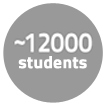Instructor Insights pages are part of the OCW Educator initiative, which seeks to enhance the value of OCW for educators.
Course Overview
This page focuses on Making Science and Engineering Pictures: A Practical Guide to Presenting Your Work as it was taught by Felice Frankel.
In this course, which was offered as a Massive Open Online Course (MOOC), students learned the basics of photography and gained an intriguing new perspective into the visual world. The curriculum emphasized photographing science and engineering phenomena, but most of the material also applied to other kinds of macro photography. The course's video tutorials were accompanied by assignments in which students used a camera, a flatbed scanner, and mobile devices. Interviews with notable image makers and art directors were also incorporated into the curriculum. Students discovered how subtle changes in lighting, composition, and background contribute to creating more effective images.
Course Outcomes
Course Goals for Students
- Learn to photograph your work with new perspectives
- Develop methods and techniques that improve the quality of your images
- Build critical thinking skills
- Increase proficiency with a range of image making devices (scanners, cameras, smartphones, video)
- Discover how compelling images reinforce and augment grant and journal submissions
- Learn to evaluate what makes an effective image
- Learn how to think graphically and how to present your photographs for journal figures, covers, and grant submissions.
The process of making pictures is an act of discovery.
— Felice Frankel
Below, Felice Frankel describes various aspects of how she taught Making Science and Engineering Pictures: A Practical Guide to Presenting Your Work.
Curriculum Information
Prerequisites
This was an introductory level course. While previous experience with a camera was helpful, it was not essential.
Requirements Satisfied
None
Offered
MITx offers a free version of this subject on edX. Please register to get started:
0.111x Making Science and Engineering Pictures: A Practical Guide to Presenting Your Work (archived)Student Information

Typical Student Background
Although the intended audience for this massive online course was the science and engineering research community, many of its active participants were artists and retired educators.
Assessment
Grade Breakdown
Student learning was assessed based on the completion of weekly assignments. A commenting guide accompanied each assignment.
Week 1: Flatbed Scanner
- Select an object or device and create scanned images of your object or device with an awareness of your settings and choices; comment on your images.
Week 2: Camera Basics
- Take four images of your object or device, setting up your camera at a 45-degree angle, and make four images at the following aperture settings: f/4, f/8, f/22, f/32; once you’ve taken your four images, remove the camera from the tripod and take one more photo of your device at f/22; comment on your images.
› Read More
Instructor Insights on Assessment
Read Felice Frankel's insights about using VoiceThread and rubrics to provide students with feedback on their work.
Course Team Roles
Lead Instructor
- Created and supervised teaching team for course
- Designed curriculum and curated materials
- Created course videos
- Created assignment comment guides (rubrics) to assess student learning
- Assessed student learning using assignment comment guides
Teaching Assistants
- Assessed student learning using assignment comment guides
- Responded to students’ comments and questions
- Curated materials for the course
Community Teaching Assistants
- Provided feedback to other learners
Software Engineer
- Facilitated the online delivery of content
